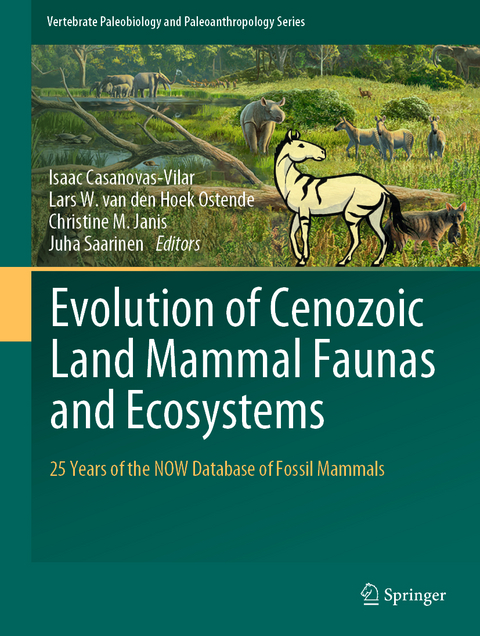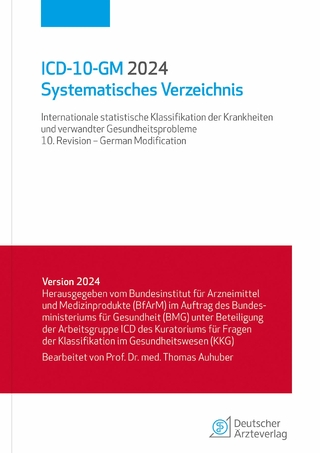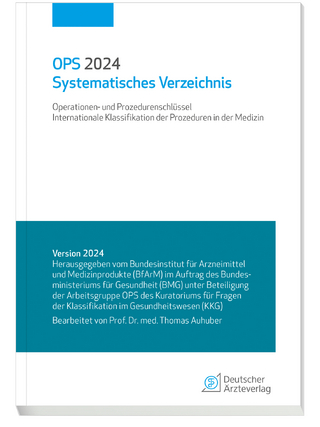
Evolution of Cenozoic Land Mammal Faunas and Ecosystems
Springer International Publishing (Verlag)
978-3-031-17490-2 (ISBN)
The volume is divided in four parts. The first part includes two chapters on the development of large paleobiological databases, providing a first-hand account on the logic and the functioning of these databases. This is a much-needed perspective which is ignored by most researchers and users of such databases and, even if centered in the NOW database, the lessons that can be learned from this part can be extended to other examples. After this introductory part, the body of the book follows and is divided into three parts: patterns in regional faunas; large scale patterns and processes; and ecological, biogeographical and evolutionary patterns of key taxa. Each chapter is written by well-known specialists in the field, withsome participation of members of the NOW advisory board. The array of selected mammal taxa ranges from carnivores, equids, ruminants and rodents to the genus Homo. The topics studied also include the diversification and radiation of major clades, large-scale paleobiogeographical patterns, the evolution of ecomorphological patterns and paleobiological problems such as evolution of body size or species longevity. In most cases the results are discussed in relation to protracted environmental or paleogeographic changes.
Dr. Isaac Casanovas-Vilar is Head of the Paleoecology & Biochronology Research Group in the Miquel Crusafont Catalan Institute of Paleontology at the Autonomous University of Barcelona.
Dr. Lars W. van den Hoek Ostende is a Researcher for the Naturalis Biodiversity Center in Leiden.
Dr. Christine M. Janis is a Professor of Paleontology in the Department of Earth Sciences at the University of Bristol.
Dr. Juha Saarinen is a Postdoctoral Researcher in the Division of Geosciences and Geography at the University of Helsinki.
Chapter 1.- History of the NOW. Chapter 2.- The NOW now. Chapter 3.- The Siwaliks: A Miocene terrestrial record densely sampled at age resolution of 105 years. Chapter 4.- Evolution of Western Asian mammal communities in the Miocene. Chapter 5.- The fall of the Pikermian paleobiome at the crossroads of the European-Asian-African continents. Chapter 6.- Islands in Transition: Changes in Mammalian Communities on Africa and South America. Chapter 7.- Environmental change and body size evolution in Neogene large mammals of Europe and North America. Chapter 8.- Body mass effects to the mammalian Niche Exploitation Profiles and to the predictions of Climate and Seasonality of Tropical Extant and Palaeo-habitats. Chapter 9.- The mouse is dead, long live the mouse (Patterns of longevity in small mammals). Chapter 10.- How often do mammalian species of the same genus co-occur in the fossil record and today? Chapter 11.- Cut not shaven, the use of filters in processing data. Chapter 12.- The effects of NOW data quality, including regional and temporal differences, on evolutionary analysis; examples from studies on large Neogene carnivore families. Chapter 13.- Asynchroneity in the evolution of New World and Old World hypsodont Equidae. Chapter 14.- Muskdeer on the run - Dispersal of Moschidae in the context of environmental changes. Chapter 15.- Late Neogene Western Eurasian bovid palaeocommunities. Chapter 16.- New giraffid determinations for the faunas of Pikermi, Samos and Maragheh. Chapter 17.- Regional topography and climate influence the nature and timing of changes in the structure of rodent and lagomorph communities through the Cenozoic of North America. Chapter 18.- Diet and locomotor trends in rodents during Cenozoic global cooling. Chapter 19.- Using diachronic biogeographic patterns of mammalian dispersals between Africa and Eurasia to infer about tempo and mode of the dispersal of the genus Homo.
| Erscheinungsdatum | 10.08.2023 |
|---|---|
| Reihe/Serie | Vertebrate Paleobiology and Paleoanthropology |
| Zusatzinfo | XVII, 231 p. 67 illus., 52 illus. in color. |
| Verlagsort | Cham |
| Sprache | englisch |
| Maße | 210 x 279 mm |
| Gewicht | 855 g |
| Themenwelt | Informatik ► Weitere Themen ► Bioinformatik |
| Naturwissenschaften ► Biologie ► Ökologie / Naturschutz | |
| Naturwissenschaften ► Geowissenschaften ► Geologie | |
| Naturwissenschaften ► Geowissenschaften ► Mineralogie / Paläontologie | |
| Schlagworte | Big Data • Biological Taxonomy • Fossil Mammals • NOW database • paleobiology • Paleo-habitats • Regional faunas |
| ISBN-10 | 3-031-17490-9 / 3031174909 |
| ISBN-13 | 978-3-031-17490-2 / 9783031174902 |
| Zustand | Neuware |
| Haben Sie eine Frage zum Produkt? |
aus dem Bereich


